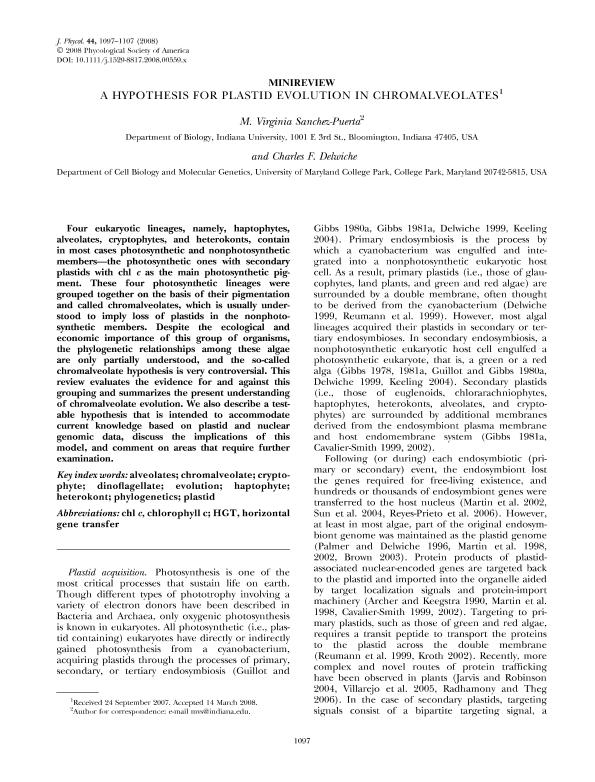Artículo
A hypothesis for plastid evolution in chromalveolates
Fecha de publicación:
10/2008
Editorial:
Wiley Blackwell Publishing, Inc
Revista:
Journal Of Phycology
ISSN:
0022-3646
Idioma:
Inglés
Tipo de recurso:
Artículo publicado
Clasificación temática:
Resumen
Four eukaryotic lineages, namely, haptophytes, alveolates, cryptophytes, and heterokonts, contain in most cases photosynthetic and nonphotosynthetic members—the photosynthetic ones with secondary plastids with chl c as the main photosynthetic pigment. These four photosynthetic lineages were grouped together on the basis of their pigmentation and called chromalveolates, which is usually understood to imply loss of plastids in the nonphotosynthetic members. Despite the ecological and economic importance of this group of organisms, the phylogenetic relationships among these algae are only partially understood, and the so‐called chromalveolate hypothesis is very controversial. This review evaluates the evidence for and against this grouping and summarizes the present understanding of chromalveolate evolution. We also describe a testable hypothesis that is intended to accommodate current knowledge based on plastid and nuclear genomic data, discuss the implications of this model, and comment on areas that require further examination.
Archivos asociados
Licencia
Identificadores
Colecciones
Articulos(IBAM)
Articulos de INST.DE BIOLOGIA AGRICOLA DE MENDOZA
Articulos de INST.DE BIOLOGIA AGRICOLA DE MENDOZA
Citación
Sánchez Puerta, María Virginia; Delwiche, Charles F.; A hypothesis for plastid evolution in chromalveolates; Wiley Blackwell Publishing, Inc; Journal Of Phycology; 44; 5; 10-2008; 1097-1107
Compartir
Altmétricas




